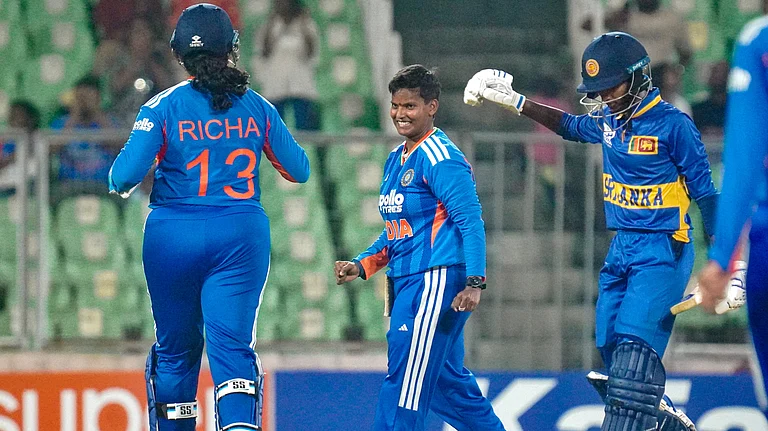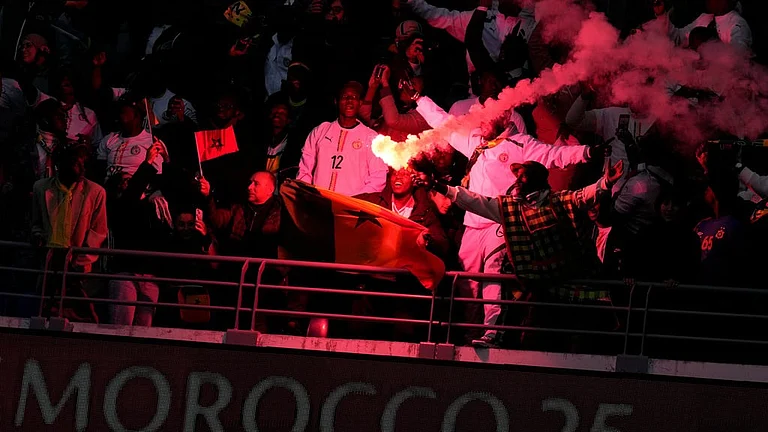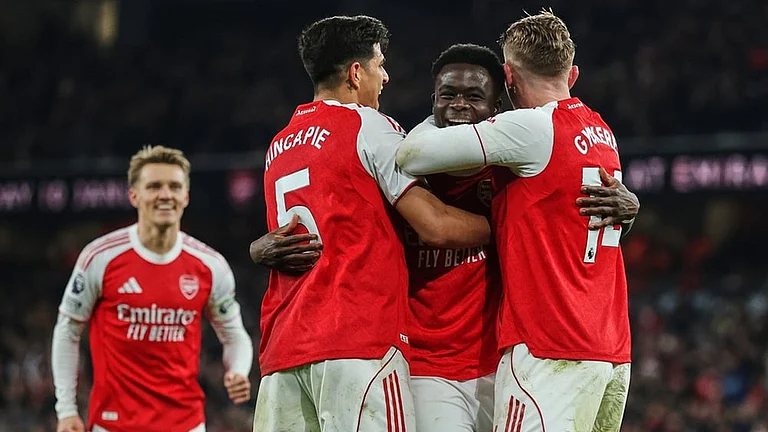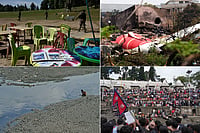There are lessons to be learnt from the Gurgaon shootout, say psychologists:
- Violence far more rampant than acknowledged. Schools must factor in the consequences of bullying.
- School counsellors must interact frequently with students. Parents must attend PTA meetings.
- Schools need to invest in mental health of students
***
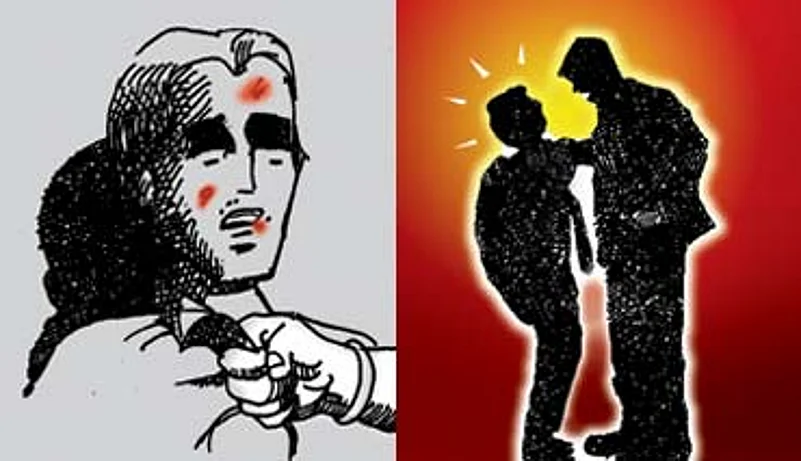
Avinash and the bigger-sized Abhishek had a few run-ins.
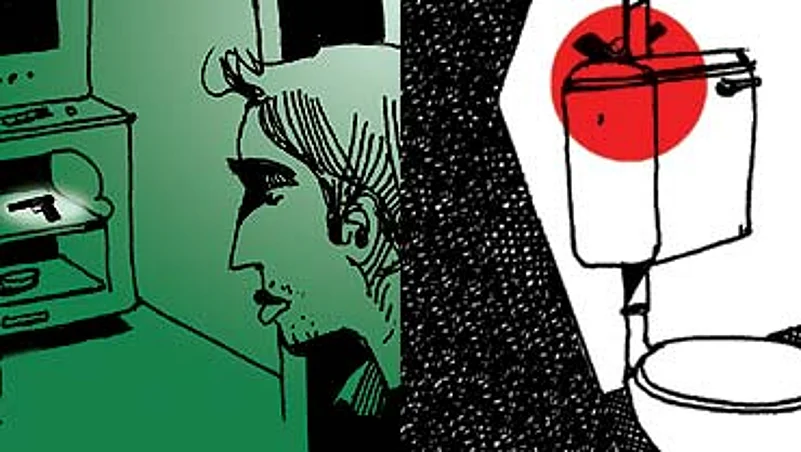
Avinash decides to 'fix' his tormentor, takes his father's gun. Avinash and Vinay hide the gun in the school toilet.
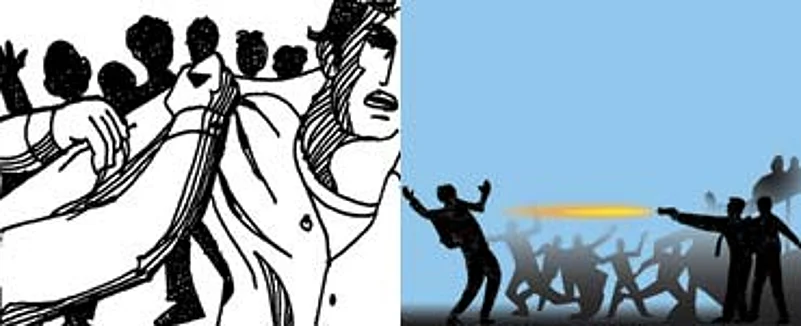
They challenge Abhishek during a break. The duo between them fire five shots at Abhishek.

The schoolboys are taken into custody later.
A little past 1 am on the night of December 13, the Faridabad Juvenile Home, about 35 kilometres from Delhi, prepared to receive two new inmates. Fourteen-year-olds Avinash and Vinay (names changed) were being brought to their new home—a drab, brown, two-floor building housing 55 juveniles, all facing detention for crimes ranging from theft to more heinous ones like murder and rape. This will be their home till such time as they get bail or are asked to serve their time.
The teenagers have spent a miserable time since, weeping and repenting their action, and the depressing interiors of the juvenile home have only served to heighten the misery. There have been visits from parents and relatives but the ordeal is only beginning. The caretaker is protective of his new inmates. Their crime is quite ordinary compared to some of his other wards, he says, speaking in that hard-boiled tone typical of those used to seeing extremes. "You have to see the bio-data of some of them," he says. A 12-year-old 'undertrial' has 18 cases ranging from murder to extortion against him. "The boys appear to have acted only when they could no longer endure it," he adds sympathetically. On December 24, Avinash and Vinay will be presented before the court.
Till about 2 pm last Tuesday, life at the Euro International School at the upmarket DLF township in Gurgaon, Haryana, was pretty mundane. Classes to attend, playing the occasional game, fighting for a seat on the bus, petty skirmishes on the playground. Nothing remarkable about the routine till one single macabre act turned the school into a household name. Avinash and Vinay, both Class viii students, pumped five bullets into classmate Abhishek Tyagi, who collapsed instantly. The action was premeditated and it has left the school and staff stunned and groping for answers.
The three protagonists were new entrants, having relocated from nearby village schools less than a year ago. In that respect they were unlike the other students who had been together from Class I. But in all other aspects, they seem to have been normal teenagers, with pretty unremarkable lives. If any of them was inclined to murder, it was certainly not evident. Did they have a violent streak in them that the teachers did not know of? The school had put in place cctvs in the classrooms, but these were switched off after the staff complained that they couldn't teach with cameras tracking their every move.
The school authorities today regret the move. Chairman Satyavir Yadav now says he will put more cameras in place, but knows all this is of little help in the event of another incident like this one. "I'd like the parents to declare in their admission forms whether they have guns at home and if so, are they kept out of reach from the children. But is it really possible to monitor all this?" asks Yadav.
In the national capital region town of Gurgaon south of Delhi, like the real estate hotbed of Ghaziabad to the east, money has come quick and easy for an entire generation of farmers and villagers. Many have sold off their lands to property sharks to settle down to a life of urban comforts. Others have joined the lucrative property dealer business themselves. The parents of the two students in question too have made their mark in the property boom. But if Avinash, Vinay and Abhishek were temperamentally different from the service class to which the other students belonged, the differences quickly got blurred in the rigours of academics.
As it is, Delhi, clinical psychologists will inform you, is particularly susceptible to violence compared to other metros. Dr Rajat Mitra says this is because Delhi—bearing the burden of history—is a more aggressive city. A sense of alienation is high here. "There is such an acute sense of competitiveness...aggression comes with the trait, so it's common in Delhi schools," says Mitra.
Mitra and others do not discount the fact of communities/ castes associated with borderline occupations like property selling and the transport business being more aggressive than other service occupations. Euro School chairman Yadav though won't have any of it. He says it's easy to generalise that a property dealer's son may be naturally disposed to violence, but nothing could be further from the truth. "My father is a transporter and I am an iim Ahmedabad graduate. It's the values learnt at home that stand you in good stead," states Yadav. He points out that in Ghaziabad and Gurgaon, it is natural to see second-generation teenagers with rural backgrounds turning to education to climb the social order.
What worries Yadav more is the rising number of gun-owning households. "I can't believe they would leave guns within reach of youngsters," he says. The father of the victim, Ravindar Tyagi, though, feels "guns are common. What is important is that it's kept out of the child's reach. The fact is, Akash's father kept a fully loaded gun in the TV trolley. It's shocking". He blames the school too. "When we get them enrolled in the best schools, we expect the authorities to take care of our children," says Tyagi.
Having lost his only son, Tyagi's anguish is understandable. But if the interviews with people who knew the boys and who interrogated them are any indication, Akash and Vilas appear to have been victims of some "vigorous bullying" by the bigger Abhishek. Investigating officials said "the pinching and pummelling appears to have gone on unnoticed by school authorities for about three months. Till two days before December 12, when the two fought again. It was then that Akash decided to 'fix' him. He was obsessed with the idea of revenge, determined to finish him off ".
Meanwhile, more theories do the rounds. Dr P.C. Shastri, chairperson of the child psychiatry and Indian Association of Private Psychiatry, says very often it is the excessive, strict discipline at home that is a child's undoing. "Defiant behaviour is high in such an environment and sometimes all it needs is a provocation...," he says but cautions that provocation does not fit into any stereotype.
Shastri, who has done extensive studies on behaviour patterns among Mumbai's students, says that very often it is incomprehensible for a bullied child to think that his actions could result in death. "In a world where aggression is actually encouraged (whether it be even in a game like cricket) and counter-aggression is not frowned upon, it is perhaps time to think of ways to give vent to it without anyone getting injured."
Violence in our schools may not be anywhere near the all-alarming levels in the US, but statistics show that it is a factor now. A Delhi school boy has just been sentenced to life for killing his classfellow two years ago. Elsewhere in Mumbai, a schoolkid was abducted and murdered. In the past week or so, at the Baruipara High School, 15 kilometres from Behrampore in West Bengal, a teenager stabbed a junior girl student who refused to marry him. Then there's the case of a public schoolboy in Mumbai who strangled himself in an apparent asphyxiation fix gone sour. The last mentioned case particularly shows up the influence of media and the Net. Times have changed from when a fascination for violent PC games was cause for worry.
While such incidents seem scattered and unconnected, psychologists believe it is time correctional systems are built to handle aggression. Clinical psychologist Mitra says, "Very often a child who has been bullied undergoes humiliation and reacts with rage. All the child needs as an outlet for the rage is provocation." Like a recent incident where a student of a prominent South Delhi school (who was being constantly bullied) hurled a stone at his tormentor, injuring him seriously. "The boy kept repeating that he could have killed him," says Mitra.
Mitra says it is time schools realise that bullying is rampant. "It can take the form of verbal abuse (largely prevalent among girls), physical abuse and relational abuse (where the intention is to destroy the self-worth of a kid). Any of this or all can result in homicidal rage," says Mitra.
Throwing light on the bully, Dr Shoba Srinath, head of child and adolescent psychiatry at the National Institute of Mental Health and Neurosciences, says aggressive kids usually come from homes where such attitudes are prevalent. "Schools should look at educating children rather than than just making them literate," says Srinath. Mitra is in agreement with her when he says that child bullies usually come from families where violence is equated with defining power, at home and outside.
Realising the warning signs, the XIth Five Year Plan makes a mention of a separate allocation for "mental health" in schools. This would require school authorities to spend time and energy understanding the psychology of students and spending time counselling them.
One of the reasons why there is little study on the behavioural aspects of school children is that most educational institutions hush up cases of violence and other aberrations whenever they come to light. The Gurgaon school shoot out should serve as a wake-up call.







